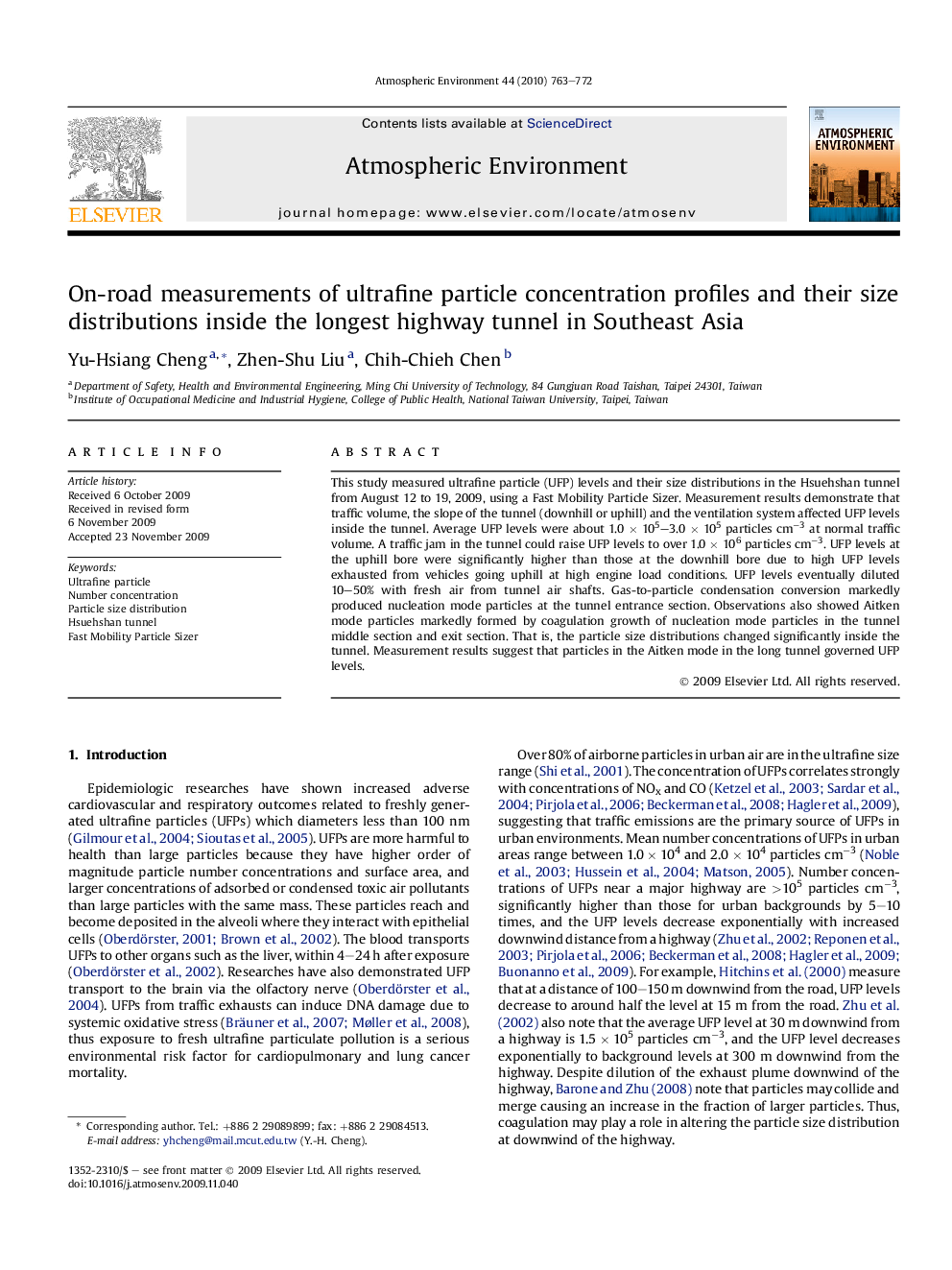| Article ID | Journal | Published Year | Pages | File Type |
|---|---|---|---|---|
| 4441084 | Atmospheric Environment | 2010 | 10 Pages |
Abstract
This study measured ultrafine particle (UFP) levels and their size distributions in the Hsuehshan tunnel from August 12 to 19, 2009, using a Fast Mobility Particle Sizer. Measurement results demonstrate that traffic volume, the slope of the tunnel (downhill or uphill) and the ventilation system affected UFP levels inside the tunnel. Average UFP levels were about 1.0 Ã 105-3.0 Ã 105 particles cmâ3 at normal traffic volume. A traffic jam in the tunnel could raise UFP levels to over 1.0 Ã 106 particles cmâ3. UFP levels at the uphill bore were significantly higher than those at the downhill bore due to high UFP levels exhausted from vehicles going uphill at high engine load conditions. UFP levels eventually diluted 10-50% with fresh air from tunnel air shafts. Gas-to-particle condensation conversion markedly produced nucleation mode particles at the tunnel entrance section. Observations also showed Aitken mode particles markedly formed by coagulation growth of nucleation mode particles in the tunnel middle section and exit section. That is, the particle size distributions changed significantly inside the tunnel. Measurement results suggest that particles in the Aitken mode in the long tunnel governed UFP levels.
Keywords
Related Topics
Physical Sciences and Engineering
Earth and Planetary Sciences
Atmospheric Science
Authors
Yu-Hsiang Cheng, Zhen-Shu Liu, Chih-Chieh Chen,
